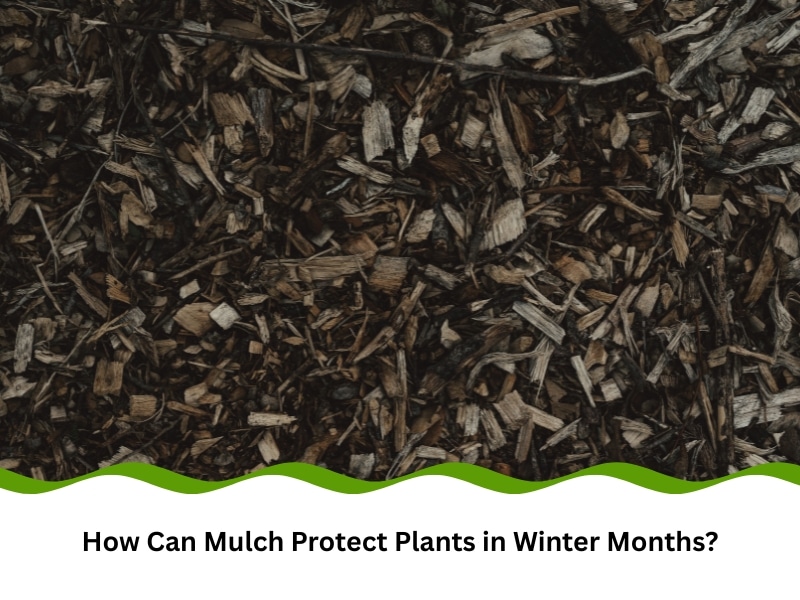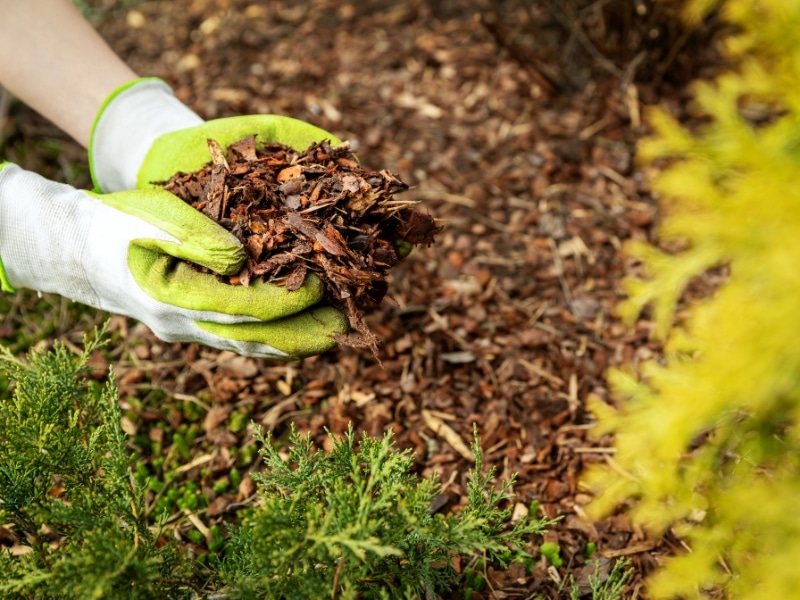Winter presents unique challenges for your garden. Falling temperatures, dry winds, and frost can seriously damage plant roots and soil health. Even in Australia’s milder regions, sharp cold snaps can wreak havoc if your garden isn’t properly prepared. One of the most effective ways to safeguard your plants is to use mulch to protect plants in winter, helping to insulate the soil and maintain moisture levels. However, it must be used correctly to achieve the best results. This article explores why winter mulch is critical, which materials to choose, common mistakes, and best practices for applying and maintaining mulch through the colder months.
Why do plants need protection during the harsh winter months?
You might think that most plants go dormant in winter and don’t need much attention. Not so. Roots remain active even when growth above ground slows, and cold weather poses several threats:
- Soil temperature swings caused by warm days and cold nights can damage delicate root systems
- Freeze-thaw cycles can push plants out of the ground, a phenomenon called frost heave
- Dehydrating winds strip moisture from both plants and soil, leaving roots parched
- Microbial activity slows down, affecting nutrient cycling and plant health
In short, winter exposes plants to unpredictable conditions. Mulch helps moderate these impacts, giving your garden a better chance to thrive come spring.
What happens if you skip using mulch to protect plants in winter?
Skipping winter mulching exposes your plants and soil to damage that can set your garden back months. Without mulch:
- Soil erodes under wind and rain, depleting nutrients and leaving roots exposed
- Frost penetrates deeper, risking root injury or death
- Moisture loss increases, leaving roots unable to access water
- Beneficial soil microbes decline, reducing soil fertility
In the worst case, plants that survive winter may emerge stressed, stunted, or permanently damaged. If you want to avoid these problems, you need to find effective methods for using mulch to protect plants in winter and apply them consistently.
Can certain types of mulch harm your plants instead of helping them?
Yes — poor mulch choices or incorrect application can backfire. To ensure mulch helps rather than harms, avoid these pitfalls:
- Fine-textured mulches like sawdust can create a dense mat, suffocating roots and preventing water penetration
- Fresh manure introduces excessive nitrogen and salts, potentially burning plants
- Synthetic or dyed mulches may contain chemicals that leach into your soil
- Mulch piled directly against stems promotes stem rot and attracts pests such as slaters and earwigs
Instead, use clean, coarse organic materials like straw, bark chips, sugarcane mulch, or composted leaves. These break down gradually, enriching the soil while providing essential winter protection.
How does using mulch to protect plants in winter improve soil health?
Beyond insulation, mulch actively supports long-term soil vitality. As organic mulch breaks down:
- Soil carbon content increases, improving soil structure and nutrient retention
- Water-holding capacity improves, reducing watering needs and keeping roots hydrated
- Beneficial microbes and earthworms thrive, boosting nutrient cycling
- Surface crusting is prevented, enhancing air and water movement into the soil
Understanding the ways organic matter supports healthy soil structure in gardens will help you appreciate the full impact of winter mulching. The decomposition process strengthens soil life and boosts plant resilience. Come spring, your plants will benefit from a richer, healthier growing environment — a long-term advantage of mulching that is often overlooked.
Benefit of Mulching | Impact on Plants and Soil |
Insulation | Protects roots from freezing and thawing cycles |
Moisture retention | Prevents dehydration in cold, windy weather |
Soil enrichment | Adds nutrients and improves soil texture |
Erosion control | Reduces runoff and soil loss during storms |
Biodiversity boost | Encourages healthy microbes and earthworms |
Healthy soil is an investment — one that consistent winter mulching supports every year.
What are the best methods for applying mulch to protect plants in winter?
Applying mulch is simple, but a few key steps make the difference between success and wasted effort:
- Apply mulch after the first frost — this helps lock soil warmth in place
- Aim for a 5–10 cm thick layer — learn how thick you should apply mulch to protect plants in winter for your specific region and plant types
- Keep mulch 2–5 cm away from plant stems to prevent rot and pests
- Extend mulch beyond the plant’s drip line to cover the entire root zone
- Use a mix of particle sizes (e.g. coarse bark with leaves) to balance insulation and aeration
This ensures your mulch performs optimally, providing warmth, retaining moisture, and supporting the soil beneath. A careful approach pays off in plant health and resilience all winter long.
Should you remove old mulch before winter reapplication?
This depends on the condition of your existing mulch. Proper assessment is key:
- Remove old mulch if it’s matted, mouldy, or compacted — such mulch can harbour pathogens and impede water infiltration
- Retain and top up mulch that remains loose, dry, and free of visible decay
- Clear mulch from crown areas of perennials and shrubs where rot risk is highest
- Compost aged mulch where appropriate, returning nutrients to your garden over time
Trapped disease or pests beneath old mulch can undo your protective efforts. When in doubt, it’s better to start fresh to ensure a healthy winter environment for your plants.
How can you maintain effective mulch coverage throughout winter?
Winter weather can scatter or compress mulch, so maintenance is important:
- Inspect mulch after storms or heavy wind events — reposition displaced material promptly
- Add small top-ups mid-season if mulch thins below optimal depth
- Gently fluff compacted mulch to restore aeration and drainage
- Monitor for pest activity, especially around mulch edges — address any infestations quickly
- Keep the mulch level even across garden beds to prevent gaps where frost or erosion can penetrate
Maintaining your mulch layer is a small task that delivers big benefits in plant protection. Regular attention ensures it continues doing its job all season.
Final thoughts
Winter mulching is a simple yet transformative practice for garden health. By insulating roots, conserving moisture, enriching the soil, and stabilising temperatures, it gives your plants the best chance to emerge strong and vibrant after the cold months. If you’re preparing your garden for winter, find out how A1 Gardening & Landscaping Sydney can protect your garden this winter — and enjoy a flourishing start to spring.


